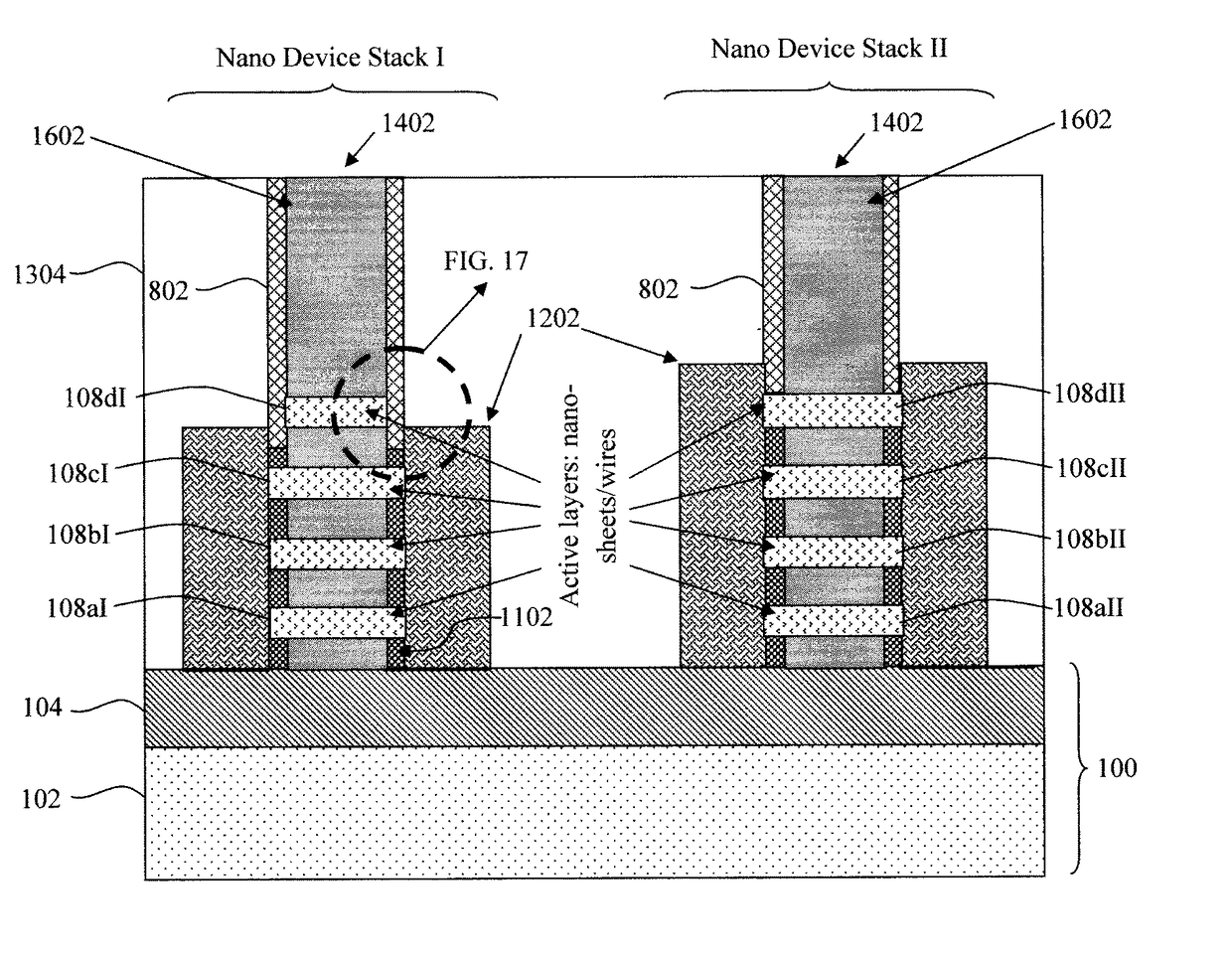Width Adjustment of Stacked Nanowires
a nanowire and nanowire technology, applied in the direction of semiconductor devices, electrical devices, transistors, etc., can solve the problems of reducing the inability to achieve the configuration of devices using current processing technology, and achieve the effect of adjusting the effective device width of stacked nanowire devices
- Summary
- Abstract
- Description
- Claims
- Application Information
AI Technical Summary
Benefits of technology
Problems solved by technology
Method used
Image
Examples
Embodiment Construction
[0026]Provided herein are techniques for tuning the effective device width of stacked nanowires in a semiconductor device by cutting the top semiconductor nanowire(s) in a stack, making them not connected to the source / drain. As will be described in detail below, this device width tuning is achieved via a cut process post dummy gate formation, but before spacer deposition.
[0027]The effective width is essentially the width of the device that delivers the current. For nanowires, the effective width is the total conducting surface around the periphery of each wire. Here a goal is to be able to produce devices that operate with different current levels, which is achieved by modifying the effective device width.
[0028]The present techniques will now be described by way of reference to FIGS. 1-15 which illustrate a process for forming a nanowire device having a variable device width. Namely, by way of the present process, the device width can be selectively tuned to produce devices having ...
PUM
 Login to View More
Login to View More Abstract
Description
Claims
Application Information
 Login to View More
Login to View More - R&D
- Intellectual Property
- Life Sciences
- Materials
- Tech Scout
- Unparalleled Data Quality
- Higher Quality Content
- 60% Fewer Hallucinations
Browse by: Latest US Patents, China's latest patents, Technical Efficacy Thesaurus, Application Domain, Technology Topic, Popular Technical Reports.
© 2025 PatSnap. All rights reserved.Legal|Privacy policy|Modern Slavery Act Transparency Statement|Sitemap|About US| Contact US: help@patsnap.com



